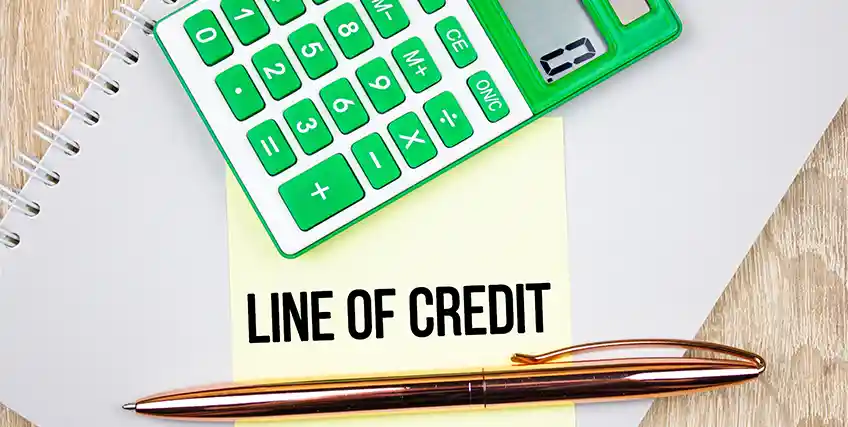The Definitive Guide to Handling Debt as A Small Business Owner
March 5, 2025 | Last Updated on: March 5, 2025

Life as a small business owner often means dealing with debt. Debt doesn’t have to be problematic, however, as long as you know how to manage that debt.
Unless you’re flush with personal assets or are a recipient of equity financing, you need to learn how to handle debt. That doesn’t just mean knowing how to budget for monthly payments, but also how to use tools like business unsecured lines of credit to fund operations.
In this article:
- Learn how to effectively manage debt as a small business owner.
- Explore options for consolidating debt, from short-term loans to business lines of credit.
- Learn about the best lines of credit for small businesses.
Looking to finance your Business?
Apply online and explore financing options for your business!
Apply Online in Minutes
Create your account to get started and see if you prequalify.
Applying does not impact your personal credit score
Go back
What is debt financing?
Debt financing is the practice of borrowing money from an outside source and paying it back, plus interest, over a period of time. Many small businesses, especially startups, raise capital for short-term needs, like cash flow shortages or purchasing inventory, through debt financing.
Debt financing of a small business can be structured in the form of short-term loans, a business line of credit, or cash flow loans.
Any entrepreneur using debt financing must pay attention to their debt ratio, the measurement of its total liabilities divided by total assets. To meet business line of credit requirements and other financing requirements, you’ll likely need a debt ratio between 0.3 and 0.6. Debt ratios of 0.4 or lower are considered better from a risk standpoint, while a debt ratio of 0.6 or higher makes borrowing money a steeper challenge.
Types of debt financing
From business unsecured lines of credit to cash flow loans, let’s take a look at some common types of debt financing and how you can effectively manage and use them.
Business line of credit
A business line of credit is a form of financing in which you get approved for a maximum credit limit with which you can make business purchases. Rather than pay interest on the entire loan amount, you only pay for what you use. Since they are revolving, as long as you pay the amount back on time, you’ll have access to the full limit. This gives you extra flexibility.
The eligibility requirements for a business line of credit are much lower than traditional business loans. Some may be approved in as little as 24 hours or less and, depending on the lender, you might only need a credit score of 500 to qualify. The best lines of credit for small businesses may even have introductory credit offers with 0% annual percentage rates (APRs) or no annual fees.
Even more importantly, business lines of credit almost never require collateral or a personal guarantee. As such, business unsecured lines of credit are accessible and less risky for startups or business owners with bad credit than traditional loans.
Business owners who aren’t sure how much money they’ll need to operate their business can benefit from the flexibility of even a small business line of credit. You can draw on funds when you need them. So long as you meet the repayment terms, you’ll build positive credit history that can help your creditworthiness for future loans, too.
The main drawback to a business line of credit is higher interest rates tend than other types of loans. But, again, you’ll only pay interest on what you use, so if you only use a small amount, you’ll pay less. (Plus, you’ll avoid origination fees and other small business loan fees.)
If you want to apply for a business line of credit, it’s easy to do so online.
- Business line of credit benefits: Fast funding, can be used to consolidate debt, good introductory offers.
- Business line of credit requirements: Low personal credit score or business credit score, low annual revenues, no personal guarantee or collateral.
Short-term loans
A loan with a relatively quick repayment period, a short-term loan is one in which the borrower receives cash in a lump sum upfront and then repays the loan, often with substantial interest rates. Some short-term loans permit the borrower to make extra payments to pay it off sooner, but others have prepayment penalties. Short-term loans generally have a term of 12 months or less.
Payments on short-term loans are required frequently — sometimes once a week or, in some cases, every day.
Although the credit requirements for short-term loans are not as strict as those for regular term loans, the frequent payment schedule may be burdensome for new businesses or businesses tight on cash flow. However, they are stricter than business line of credit requirements and often require collateral to secure the loan. That makes them a less compelling option than business unsecured lines of credit.
Like a line of credit, rapid processing is one of the main attractions of a short-term online loan. Sometimes, you can receive funds in your business bank checking account the same day you apply. In addition to fast underwriting, other advantages of short-term online loans for working capital include paying less interest, the chance to improve a bad credit rating, and flexibility.
You can complete a short-term loan application with both traditional and alternative lenders online in a matter of minutes.
In contrast to a short-term loan, long-term financing is a more appropriate option for larger projects such as purchasing a business, renovations, equipment purchases, or real estate investments.
- Short-term loan benefits: Fast funding, lower interest rates than lines of credit, upfront lump sum
- Short-term loan requirements: Higher credit scores, stronger annual revenues, more financial statements and tax returns, usually personal guarantee or collateral.
Cash flow financing
With a cash flow loan, a small business owner gets a business cash advance based on the business’s revenue. Rather than paying the money back over time with interest, you get the remaining percentage of your revenue, minus the lender’s fees, as your cash flow comes in. Invoice factoring and merchant cash advances (MCAs) are common forms of cash flow financing .
Invoice factoring
For companies with unpaid invoices, invoice factoring is a financing method in which you sell your accounts receivable at a discount for a lump sum cash amount.
A method of securing working capital that is a little different than applying for a loan, invoice factoring is the process of selling invoices at a discounted rate to a factoring company and receiving a lump sum of cash that can be used as working capital.
The business will sell the invoice to the factoring company at a 3 percent discount, to account for the factoring fee. This method of securing working capital enables a business to work around the obstacle of a slow-paying customer. Some factoring companies will supply the cash needed for working capital within 24 hours.
Some of the drawbacks to invoice financing for small business funding include surrendering control and the cost involved in selling invoices at a discount. Like a business unsecured line of credit, there are no guarantees involved, but there are sacrifices.
- Invoice factoring benefits: Fast funding, allows for faster influxes of cash flow.
- Invoice factoring requirements: Unpaid invoices, ability to sacrifice future revenue for immediate cash flow.
Merchant cash advances
Another way to get quick cash is a merchant cash advance. In this instance, an MCA provider gives a borrower cash in exchange for a portion of future credit card or debit card sales, plus an additional fee.
Again, like a business unsecured line of credit, a merchant cash advance does not require collateral and often doesn’t require a minimum credit score. An MCA can be an expedient way for a business owner to get capital when facing unforeseen expenses or taking advantage of a time-sensitive deal.
With an MCA, businesses usually have to make daily or weekly payments based on credit card receipts. If the company has had a slow day, the repayment amount for that day is reduced. How much a funder takes is tied to a company’s success more than the calendar.
Business line of credit requirements are light, but MCAs are even lighter. You don’t need much of a credit history at all, as providers make their decisions based on current operations and sales projections. A merchant cash advance might be the best option for a fast business loan for businesses with strong financial forecasts, like seasonal businesses in the offseason.
The ease and expediency of merchant cash advances is not free, however. The factor rate, which is a percentage – often expressed as a decimal ranging from 1.1 to 1.9 – that shows how much extra a borrower owes on a loan, carries a high effective annual percentage rate (APR), and repaying it can be a genuine burden on a company’s cash flow.
- MCA benefits: Fast funding, flexible repayment
- MCA requirements: Minimal (or no) credit score requirements, ability to accept credit cards, ability to pay daily or weekly.
Advantages of debt financing
Each of these options can be used to pay down other debt, as well as a variety of other business needs. Although debt sounds scary, there are benefits to debt financing for a small business owner, including:
- With debt financing, you need not surrender a stake in your business. You retain full ownership of your company.
- By retaining full ownership of your business, you also have final say in how it’s operated. A lender cannot dictate how you run your company (while a partner can).
- Any interest paid on money that you borrowed for business activities is tax deductible.
- Making on-time payments after borrowing money can help you boost your credit score.
Disadvantages of debt financing
Of course, taking in debt means incurring risk. Here are some of the potential drawbacks to funding your small business on credit:
- Failure to pay off a loan puts your company's assets on the line. Without enough collateral, you might have to sign a personal guarantee, which potentially exposes your personal finances to risk. A business unsecured line of credit allows you to avoid collateral and personal guarantees.
- Financial growth may be hindered while you are required to make regular payments on your loan every month. If there’s a variable interest rate on the financing, your cash flow could be jeopardized.
- Unless you have good credit already, qualifying for the loan that you’re seeking may be difficult. Likewise, startups will find it harder to qualify than established businesses.
- Late or skipped payments can negatively impact your business’s credit rating, making it more difficult to borrow money in the future.
- Even if your business fails, you’re still on the hook to pay off your debt, meaning a worst-case scenario of bankruptcy.
Ultimately, there might be sufficient advantages for a small business owner to have company debt if it means preserving full ownership and control of the decision-making in one’s company. There are funding sources online that can help a small business owner make informed decisions about debt financing. These sources tailor funding to match small businesses’ needs as they take on an ever-changing economic landscape.
Conclusion
Debt doesn’t have to be a bad thing. So long as you don’t take out more than you can afford, debt can help finance business operations and support sustainable growth. With financing options like a business unsecured line of credit, you can avoid putting your personal assets at risk while getting the flexible funding you need to support your business.
FAQs
What is debt financing?
Debt financing is when a business borrows money from an outside source, like a lender, and pays it back, plus interest, over a period of time.
What is a business unsecured line of credit?
A line of credit is a combination between a loan and a business credit card. A borrower is approved for a maximum credit line and can draw on that line to make business purchases. Unlike a loan, they only pay interest on what they use, not the full approved amount. A business unsecured line of credit is a line of credit that does not require a personal guarantee or collateral to get.
As a revolving line of credit, once you pay back an unsecured business line of credit, you’ll have access to the full credit limit again.
What are the business line of credit requirements?
The best lines of credit for small businesses have minimal requirements, small monthly revenues, and no time in business requirements.
How to apply for a business line of credit?
To apply for a business line of credit, research providers online and see what introductory offers your business may qualify for. Then, fill out an application online. The application process takes minutes, and you may get approval in less than one business day.
What are some forms of debt business financing?
The most common forms of debt financing are short-term loans, business lines of credit, and cash flow loans.
Frequent searches leading to this page
guide to debt financing for small businesses, Invoice financing, apply for business line of credit , best line of credit for small business




